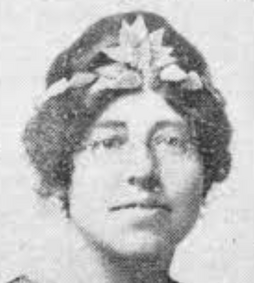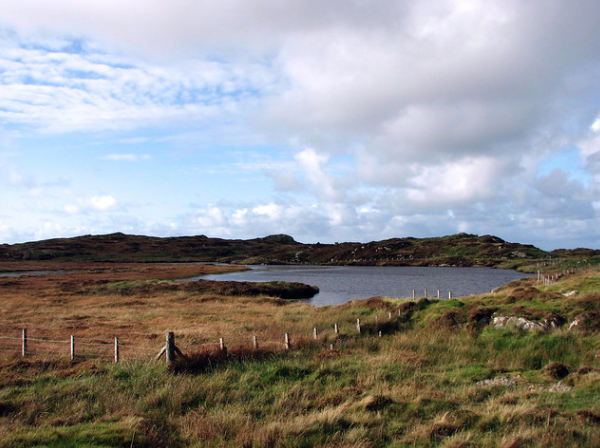The mysterious case of Netta Fornario on the Scottish Island of Iona
Revised December 2023
Netta Fornario was found dead on the Scottish island of Iona on November 19, 1929, aged 33. She was found naked, apart from a black cloak, with scratches on her feet, and a knife was found nearby, as well as a cross that was cut into the hillside near the body. The circumstances behind her death remain mysterious even after so many years. What happened to Netta remains the subject of much speculation.
Where is Iona?
Iona is a small island in the Inner Hebrides, which is about 1 mile (1.6km) from the coast of Mull. It is about 1 mile wide and 4 miles long, with a population of just under 200 people.
The main settlement, located at St. Ronan's Bay on the island's eastern side, is called Baile Mòr and is also known locally as "The Village". The primary school, post office, the island's two hotels, the Bishop's House and the ruins of the Nunnery are here. The Abbey and MacLeod Centre are a short walk to the north.
It was a sacred place for the ancient Celts and early Christians, where the Celtic Christian illuminated manuscript, the Book of Kells, was created. The island had been visited and used for ceremonial worship long before Christianity arrived.
St. Oran's church Iona
The background of Netta Fornario
Marie Norah Emily Edith Fornario, known as “Netta”, was born in Cairo, Egypt, in 1897, the daughter of Norah Edith Ling and Guiseppe Nicola Raimundo Fornario, an English mother and Italian doctor father. After her mother died in 1898, she was placed in the care of well-to-do tea dealer Thomas Pratt Ling, her maternal grandfather, and lived with him and his family at Leigham Holme, Leigham Court Road, Streatham. Before that, she lived in Italy.
At the time, London and the surrounding area had many occult societies and orders operating with the rich and famous. She became a member of the Alpha et Omega offshoot of the Hermetic Order of the Golden Dawn (founded by the famous occultist Aleister Crowley) and an officer in a Co-Masonry lodge in West London (a Freemason lodge that admitted both men and women). Members of many of these orders dedicated themselves to learning ancient magical rites, going into meditative trances, summoning spirits and demons, and participating in intricate ceremonies that could last for days. She was also suspected of being a Rosicrucian, an order claiming to possess esoteric wisdom handed down from ancient times. The name derives from the order's symbol, a rose on a cross, similar to Martin Luther's family coat of arms.
Netta Fornario’s trip to Iona
Netta became interested in the island of Iona after reading a story by her favorite author, William Sharp, describing the area around Loch Staonaig where the fairies roam free. Sharp was a Scottish writer of poetry and literary biography in particular, who, from 1893, also wrote as Fiona Macleod, a pseudonym kept largely secret during his lifetime.
According to fellow occultist Dion Fortune, Netta went to Iona to conduct some deep healing and study Green Ray Elementals (non-magic folk speak: Fairies). Dion Fortune was a renowned occultist at the time and knew Netta very well. However, Dion distanced herself from Netta because she was getting too deep into things she could not understand or control.
When Netta arrived on the island, most summer lodgers were leaving, so accommodation was easy to find, and she stayed with the MacRae family.
She was said to be showing strange behaviors. The family she was staying with said she would go into trance-like states, always seemed to have a distant look in her eyes and would sometimes speak in incoherent ramblings. Also, it was said that her silver jewelry had turned black. She sent a very cryptic message to her London housekeeper saying that she would not be home anytime soon as she had a terrible case of healing to deal with. Netta would roam around the island for hours trying to visit as many pre-Christian sites as she could.
The Scotsman, 27th November 1929, said - “This “alien” woman, who dressed in the fashion of the Arts and Crafts movement – with a long cape and hand-woven tunic – settled into the house of someone only known as Mrs MacRae. The 33-year-old Fornario spent her time walking the island in long trances, some of which could last for days.”
According to Francis King’s book Ritual Magic in England, Fornario told her landlady that “certain people” were affecting her telepathically.
The disappearance of Netta
On the 17th of November 1929, the family she was staying with found Netta packing her stuff in an urgent rush to leave the island. She said several people were psychically attacking her on the island. The family warned Netta that no ferries could take her back to the Scottish mainland because it was a Sunday. She ignored them, but after a few hours of waiting at the ferry port, she returned to the lodgings much calmer, saying she no longer wanted to leave. Netta then decided to go out on one of her many long walks.
On the 18th of November, a family member knocked on her bedroom door but received no reply, so she decided to enter the room. Her clothes, bed, and belongings were neatly positioned and folded away. Everything looked completely normal.
Discovery of the body
They went out searching for Netta, but no one could find her. It wasn’t until the 19th of November that her black-caped body was discovered by two local men, Hector MacLean of Sligneach and Hector MacNiven of Maol Farm. She lay between the Machar and Loch Staonaig, in a hollow in the moor, with a knife nearby. The body was next to a fairy mound called Sithean Mor, or Angels' Hill. Dotted throughout the British Isles, these enchanted hills are often the remnants of Iron Age Celtic structures covered by vegetation over time.
She or someone else had carved a cross into the hillside where she lay using the discarded knife. According to some occultists, this is a method used when contacting the faerie realm. Upon first inspection, it looked like she had died from exposure. Some reports noted that her feet and toes were cut, suggesting she was running, but running to where or from what?
Sithean Mor, or Angels' Hill
Loch Staonaig iona
The Autopsy
The coroner’s report on her death could not confirm the time of her death, only that it had happened sometime between the 17th and 19th of November. He concluded his report by stating that exposure to the weather had killed her, as there was no obvious evidence of foul play. She is buried in a simple grave on the island.
There was a detailed 1955 account of Netta’s story by Alasdair Alpin MacGregor, who used the testimony of two Ionan-dwelling friends, Lucy Bruce and Iona Cammell, the latter of whom wrote an obituary for Netta in The Atlantis Quarterly. MacGregor’s account appeared in his book “The Ghost Book: Strange Hauntings in Britain.”
Netta Fornario grave on Iona
Netta died with the sum of £424 18s and 6d in her estate, worth around £25,000 today.
No police investigation was carried out as the presiding physician noted the cause of death as heart failure from exposure. This explanation has never satisfied Ron Halliday, a psychic investigator and author of Evil Scotland, who thinks the death should have been appropriately investigated.
The Oban Times article reported that several letters of ‘strange character’ were also taken by the police, who passed them on to the Procurator-Fiscal for ‘consideration’.
Further reading
Death on Iona: The Mysterious Death of Norah Fornario and the Search for Netta - Ben Oakley
Exclusive articles for members of StrangeOutdoors that are not available elsewhere on the site.
See the latest Exclusive members-only articles on StrangeOutdoors.com
Read other strange stories from Scotland
The strange and unexplained death of Nicholas Randall in the Scottish Highlands
The disturbing death of Fiona Torbet in the Scottish highlands
The Eilean Mor Lighthouse Keepers
The strange disappearance of Shaun Ritchie from Scotland on Halloween Night
The Great Mull Air Mystery - The death of Peter Gibbs on the Isle of Mull in Scotland (Member only)
The strange disappearance of the YouTube Survivalist Finn Creaney in the Scottish Highlands
Sources
http://www.unexplainedpodcast.com/episodes/2016/1/24/episode-1-opening-the-gate
https://discovery.nationalarchives.gov.uk/details/r/C4175377
https://www.mentalfloss.com/article/555841/strange-1920s-death-iona-scotland-nora-emily-fornario
http://ciphermysteries.com/2018/09/14/netta-fornarios-missing-papers
http://www.strangehistory.net/2013/01/31/mysterious-death-on-iona-1928/
http://faeryfolklorist.blogspot.com/2015/04/sithean-mor-fairy-hill-of-iona.html





